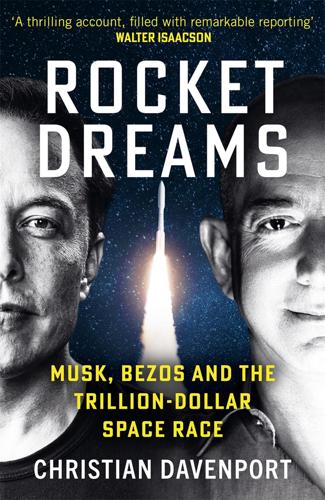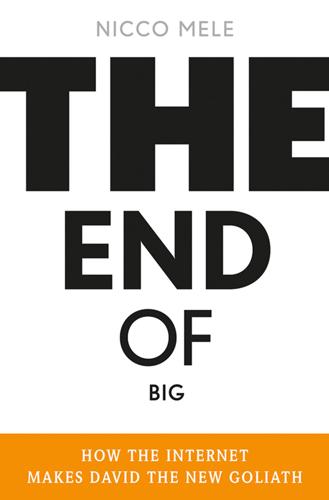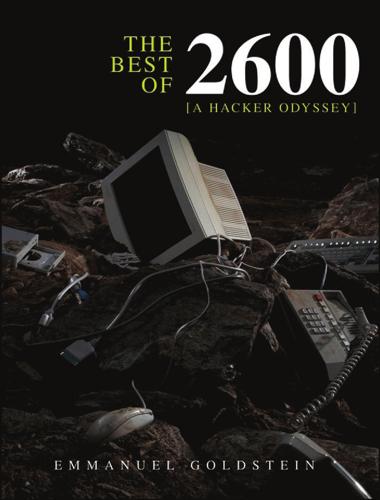
Talk Is Cheap: Switching to Internet Telephones
by
James E. Gaskin
Published 15 Mar 2005
They do include the amount of time no sounds were digitized to keep the conversation flowing normally (see Figure 1-5). They also wait longer between packets, sending a packet every 180 milliseconds rather than every 30. Figure 1-5. More efficient packet voice bandwidth usage over a broadband connection For connections with limited upstream bandwidth (such as ADSL, satellite Internet, and many cable Internet services), most services offer ways to increase the compression of outbound voice traffic to use less bandwidth. The sound quality drops slightly, but the alternative is to potentially drop the conversation altogether if other upstream traffic steals too much of the limited bandwidth.
…
Index [SYMBOL] [A] [B] [C] [D] [E] [F] [G] [H] [I] [K] [L] [M] [N] [O] [P] [Q] [R] [S] [T] [U] [V] [W] [X] [Z] Index [SYMBOL] [A] [B] [C] [D] [E] [F] [G] [H] [I] [K] [L] [M] [N] [O] [P] [Q] [R] [S] [T] [U] [V] [W] [X] [Z] 1xRTT (Single Carrier Radio Transmission Technology) 5.8GHz cordless phones 800 numbers 911 Enhanced issues support Wi-Fi phones and Index [SYMBOL] [A] [B] [C] [D] [E] [F] [G] [H] [I] [K] [L] [M] [N] [O] [P] [Q] [R] [S] [T] [U] [V] [W] [X] [Z] ADSL alarm systems and broadband phone service Altec Lansing headset analog to digital advantages of digital over analog conversion samples sounds examples moving from problems analog, digital products replacing analog products Any Phone To Any Phone method AOL Keyword: Broadband Gear Area Code Selection feature area codes, choosing 2nd Asterisk Linux-based phone switch AT&T 2nd CallVantage political power ATA (Analog Telephone Adapter) Automatic Call Rejection Available Area Codes feature Index [SYMBOL] [A] [B] [C] [D] [E] [F] [G] [H] [I] [K] [L] [M] [N] [O] [P] [Q] [R] [S] [T] [U] [V] [W] [X] [Z] bandwidth analog versus digital managing for quality upstream Basic Local Service, residence BellSouth bird dog fees Bolt, Beranek and Newman branch office connections, free broadband connection, calling phone companies router, free broadband phone carriers charges versus SBC charges features free long distance politics services broadband phone service 911 service future of problems support alarm systems and cost decision checklist enhancements to traditional phone services Google and monitoring accounts monitoring costs rebooting requirements satellite and TiVo phone links signing up Wi-Fi phones and BroadVoice 2nd advanced features unlimited calling Broadvox Index [SYMBOL] [A] [B] [C] [D] [E] [F] [G] [H] [I] [K] [L] [M] [N] [O] [P] [Q] [R] [S] [T] [U] [V] [W] [X] [Z] cable Internet services call forwarding 2nd call quality, improving Call Waiting caller ID 2nd calling broadband connection conference free three-way traditional telephone numbers CallWave Internet Answering Machine service Mobile Call Screening service Mobile Call Transfer service capabilities of the different Internet phone systems Carterfone cell phones and 911 service Citron, Jeffrey clamshell designs versus candy bar-style phones Claritel i750H common carrier rules for Internet service compression Computer Software Phone to Another Computer Software Phone method Computer Software Phone to Any Phone method computer-centric Internet Telephony phone providers features regulations and phone service decision checklist service Computer Software Phone to Another Computer Software Phone method Computer Software Phone to Any Phone method versus phone-centric service computer-centric services providers Free World Dialup Skype Xten conference calling 2nd 3rd connections peer-to-peer to public telephone network connections, last mile of Connectotel text-messaging gateway controlling intelligence copper wire copyright and government-created information cordless phones 2nd linking to standard phones through adapters Index [SYMBOL] [A] [B] [C] [D] [E] [F] [G] [H] [I] [K] [L] [M] [N] [O] [P] [Q] [R] [S] [T] [U] [V] [W] [X] [Z] D-Link routers data in transit data packets Internet Telephony Real Time Protocol digital advantages of digital over analog products replacing analog products representation of sine wave technology, foundation directory information DirecTV and phone links Dish Network and phone links DMS/ALI (Data Management System/Automatic Location Identification) DSL (Digital Subscriber Line) dual-mode cell broadband phones Index [SYMBOL] [A] [B] [C] [D] [E] [F] [G] [H] [I] [K] [L] [M] [N] [O] [P] [Q] [R] [S] [T] [U] [V] [W] [X] [Z] encrypted conversations encryption, automatic Enhanced 911 equipment choosing computer-centric phone-centric computer-centric high-end midrange purchasing quick and cheap expandable cordless phones extension phones Motorola Index [SYMBOL] [A] [B] [C] [D] [E] [F] [G] [H] [I] [K] [L] [M] [N] [O] [P] [Q] [R] [S] [T] [U] [V] [W] [X] [Z] fax service faxes FCC web site features, optional FHSS (Frequency Hopping Spread Spectrum) Fiber to the Premises (FTTP) file transfers built-in firewalls 2nd forwarding calls free calls FreeWorld Dialup 2nd signing up Friis, Janus 2nd Index [SYMBOL] [A] [B] [C] [D] [E] [F] [G] [H] [I] [K] [L] [M] [N] [O] [P] [Q] [R] [S] [T] [U] [V] [W] [X] [Z] Google and Internet Telephony government-created information and copyright GPRS (General Packet Radio Service) Grove, Andrew Index [SYMBOL] [A] [B] [C] [D] [E] [F] [G] [H] [I] [K] [L] [M] [N] [O] [P] [Q] [R] [S] [T] [U] [V] [W] [X] [Z] handsets, inexpensive headphones, noise-canceling headsets Altec Lansing Logitech mid-price range Plantronics upgrading Index [SYMBOL] [A] [B] [C] [D] [E] [F] [G] [H] [I] [K] [L] [M] [N] [O] [P] [Q] [R] [S] [T] [U] [V] [W] [X] [Z] ILEC (Incumbent Local Exchange Carrier) innovators Instant Messaging built-in tricks Intel Internet phone systems capabilities of Internet Telephony approaches bandwidth cheaper than traditional phone service computer-centric current statistics data packets FCC and first software platforms from phone companies SBC, Qwest, and BellSouth Verizon and AT&T overview reasons for using requirements services versus traditional phone features versus traditional telephone VoIP Index [SYMBOL] [A] [B] [C] [D] [E] [F] [G] [H] [I] [K] [L] [M] [N] [O] [P] [Q] [R] [S] [T] [U] [V] [W] [X] [Z] KaZaA Konftel Index [SYMBOL] [A] [B] [C] [D] [E] [F] [G] [H] [I] [K] [L] [M] [N] [O] [P] [Q] [R] [S] [T] [U] [V] [W] [X] [Z] LAN (Local Area Network) laptops, making and receiving calls from last mile of a connection Lingo broadband phone service unlimited calling Linksys routers WRT54GP2 Linspire Logitech headset VideoCall system long distance calls, free charges Index [SYMBOL] [A] [B] [C] [D] [E] [F] [G] [H] [I] [K] [L] [M] [N] [O] [P] [Q] [R] [S] [T] [U] [V] [W] [X] [Z] MCI Microsoft Windows XP Microsoft Xbox Live missed call notification MoneyBookers issues Moore, Gordon Motorola expandable cordless phones MD761 MD761 and MD71 Vonage voice mail Multipath (call forwarding) music on hold service MyPhoneCompany Index [SYMBOL] [A] [B] [C] [D] [E] [F] [G] [H] [I] [K] [L] [M] [N] [O] [P] [Q] [R] [S] [T] [U] [V] [W] [X] [Z] National Emergency Number Association (NENA) Net2Phone Network Address Translation (NAT) 2nd networks, controlling intelligence Next Alarm Internet connection alarm monitoring noise-canceling headphones Number Availability feature Index [SYMBOL] [A] [B] [C] [D] [E] [F] [G] [H] [I] [K] [L] [M] [N] [O] [P] [Q] [R] [S] [T] [U] [V] [W] [X] [Z] online reference for Internet telephony (Iptel) OptimumVoice Index [SYMBOL] [A] [B] [C] [D] [E] [F] [G] [H] [I] [K] [L] [M] [N] [O] [P] [Q] [R] [S] [T] [U] [V] [W] [X] [Z] Packet8 911 service and broadband video phone service unlimited calling videophone packetized voice Pay Per View, and broadband phone service PBX (Private Branch eXchange) simulating PDA, making and receiving calls from peer-to-peer telephone providers Free World Dialup Xten to public telephone network connections peering arrangements 2nd phone extensions, adding phone lines, additional phone services, traditional phone-centric service Any Phone To Any Phone method providers AT&T CallVantage BroadVoice Broadvox good points issues Lingo MyPhoneCompany Net2Phone OptimumVoice Packet8 RyanTech SBC Time Warner Verizon VoicePulse Vonage 2nd VoxFlow versus computer-centric service phones, extension Motorola Phonex network adapters Plantronics headset Pocket PC Pocket PC and Skype Polycom POTS (Plain Old Telephone System) 2nd power lines for networking web site presence and Skype price savings providers, comparing PSAP (Public Safety Answering Point or Public Service Access Point) PSTN (Public Switched Telephone Network) Pulver, Jeff Index [SYMBOL] [A] [B] [C] [D] [E] [F] [G] [H] [I] [K] [L] [M] [N] [O] [P] [Q] [R] [S] [T] [U] [V] [W] [X] [Z] Quality of Service technology Qwest Index [SYMBOL] [A] [B] [C] [D] [E] [F] [G] [H] [I] [K] [L] [M] [N] [O] [P] [Q] [R] [S] [T] [U] [V] [W] [X] [Z] RBOC (Regional Bell Operating Company) redial feature regulatory issues rewiring detailed instructions process described warnings against Riparius Internet Handset RJ-11 connectors RJ-45 connectors Robertson, Michael routers broadband free D-Link Linksys security features upgrading Vonage RyanTech Index [SYMBOL] [A] [B] [C] [D] [E] [F] [G] [H] [I] [K] [L] [M] [N] [O] [P] [Q] [R] [S] [T] [U] [V] [W] [X] [Z] satellite Internet satellite TV phone links and broadband phone service SBC 2nd features price list SBC charges versus broadband phone charges Simul-Ring (call forwarding) SIP versus Skype 2nd SIPphone costs signing up Skype 2nd 3rd account management ActionTec adapter business details they don't mention calling users calls from a commerical airliner calls from the top of Mt.
…
They do include the amount of time no sounds were digitized to keep the conversation flowing normally (see Figure 1-5). They also wait longer between packets, sending a packet every 180 milliseconds rather than every 30. Figure 1-5. More efficient packet voice bandwidth usage over a broadband connection For connections with limited upstream bandwidth (such as ADSL, satellite Internet, and many cable Internet services), most services offer ways to increase the compression of outbound voice traffic to use less bandwidth. The sound quality drops slightly, but the alternative is to potentially drop the conversation altogether if other upstream traffic steals too much of the limited bandwidth.

Rocket Billionaires: Elon Musk, Jeff Bezos, and the New Space Race
by
Tim Fernholz
Published 20 Mar 2018
Alongside Papua New Guinea and Pakistan, O3b found customers that one reporter cataloged through industry jokes: “the ‘other three billionaires’ for luxury yachts, the ‘other three barrels’ for offshore energy producers and the ‘other three battle groups’ for military customers.” Whatever the source, investors saw that there was real demand for satellite internet access. SES exercised an option to buy a majority stake in O3b in 2016. By then, Wyler was already on his next step up the ladder, with new lessons learned and larger ambitions. O3b’s constellation would eventually grow to fourteen satellites in medium earth orbit, which limited its service area to a wide band around the equator.
…
He ticks them off: the miniaturization of chips and batteries, the improvements in solar panel technology, advances in satellite antennae, the lower cost of launches promised by companies like SpaceX, and the increased demand for and value of data transmission. Wyler brought his idea to Google. The company had already shown an interest in satellite internet, and by 2013 it had $50 billion in cash on hand. If any firm had the hubris and the resources to launch its own satellite constellation, it would be the search kings of Mountain View, California. They hired Wyler to explore the possibilities of the scheme, and he worked with Google for months on a plan for a billion-dollar satellite scheme.
…
He expects suborbital tickets to fall from the current market level—Virgin Galactic’s $250,000-a-seat ride—to just $30,000 to $50,000 per person within five years. He predicts orbital tourism will be $3 to $5 million a flight when it matures. Indeed, SpaceX announced in 2017 that two wealthy individuals had put down a deposit to fly around the moon in a Dragon space capsule. Yet SpaceX’s real bet, on satellite internet, is tailored to Elon Musk’s entrepreneurial approach. He finds an existing market for products like rockets or cars, then takes it over by pushing that technology to the limit. If eighty satellites could be a successful business, why not four thousand? Blue Origin’s ambitions to build out the lunar economy are, in turn, very much in the vein of Jeff Bezos’s approach to business: envision something entirely fantastic—like an invisible store where you can buy everything, or mining water to produce energy on the moon—and figure out how to make it real.

The Metaverse: And How It Will Revolutionize Everything
by
Matthew Ball
Published 18 Jul 2022
This represents 20–40 ms in savings versus today’s 4G networks. However, this only helps the last few hundred meters of data transmission. Once a wireless user’s data hits the tower, it moves to fixed-line backbones. Starlink, SpaceX’s satellite internet company, promises to provide high-bandwidth, low-latency internet service across the United States, and eventually the rest of the world. However, satellite internet doesn’t achieve ultra-low latency, especially at great distances. As of 2021, Starlink averages 18–55-ms travel time from your house to the satellite and back, but this time frame extends when the data has to go from New York to Los Angeles and back, as this involves traveling across multiple satellites or traditional terrestrial networks.
…
See also PlayerUnknown’s Battlegrounds (PUBG); Samsung Spaces, 144 SpaceX, xi, 4, 87 Spinal Fusion Laboratory, 268 Spotify, 96, 184–85, 196–98, 244, 255, 308 Square, 172, 187, 210, 299 Square Enix, 106, 303 standards and protocols file formats, 39, 41, 121–24, 123, 136, 299 OBJ file format, 299 open standards, 14, 17, 38 OpenGL, 175, 176 open-source, 15, 136, 175, 212–13, 231–33, 287 OpenXR, 193, 287–88 proprietary, 15, 35 “Protocol Wars,” 42, 62, 129 3D standards and exchanges, 135–40, 248 Wireless Application Protocol (WAP) standard, 240 see also Border Gateway Protocol (BGP); Internet Protocol Suite (TCP/IP) Starlink satellite internet, 87 start-ups, 14, 17 acquisitions of, xiii, 141, 144 decentralization and, 214, 283 investments in, 190, 201 regionalization of the internet and, 302 see also CTRL-labs Star Wars, 8, 119, 139, 257–59 Steam, 67, 107–8, 177–82 ban on blockchain games, 234 “most favored nations” (MFN) clauses, 180–81, 183 real-time gaming chat in, 67 Steamworks, 108, 178, 180–81 Stephenson, Neal Cryptonomicon, 101n Diamond Age, The, 255n Snow Crash, 3–5, 8, 21–22, 43, 46–47, 66, 68, 305 Stimson, Henry L., x Stoll, Clifford, 308 Strategic Development Partners, 266 streaming, 77, 192, 132, 187n, 280.

Tubes: A Journey to the Center of the Internet
by
Andrew Blum
Published 28 May 2012
But if that local traffic were to increase—and it always does—there’s a point at which the elegance of interconnecting all of them, literally cutting Chicago out of the loop, is unmistakable. In places that hang on to the Internet by a narrower thread, that threshold is more easily crossed, and keeping the traffic local is essential. Until recently, for example, the landlocked central African country of Rwanda depended entirely on satellite Internet connections, which were expensive and slow. If the few local ISPs weren’t careful, an email heading across the capital of Kigali might end up having to make two 45,000-mile round-trips to space. In 2004, the RwandaIX opened to solve the problem, speeding up access to the local pieces of the Internet, and saving the expensive international bandwidth for traffic that was, in fact, international.
…
See also Tata Communications New York City data storage in, 230 Equinix in, 164 and Europe-US telephone connection, 175 fiber highways in, 163–71, 172, 265–66 fiber-optic connections to, 26 Fitzgerald story about, 3 Google headquarters in, 163–64, 172 history of Internet and, 50 hubs in, 171–80, 181 as important network meeting point, 164 and Internet as series of tubes, 5 London traffic with, 180, 202, 208 111 Eighth Avenue (New York City), 163–64, 171, 266 peering and, 128 60 Hudson Street in, 171–74, 176 structure of Internet and, 27 32 Avenue of the Americas in, 171–80 as undersea cables port, 194, 199 New York University (NYU), 50 Newby, Hunter, 174 Ninth Avenue fiber highway (New York City), 164 Nipper, Arnold, 137–38, 140–43, 144–45, 239 North American Network Operators’ Group (NANOG), 58, 66, 157 Austin meeting of, 119–23, 127, 128–35, 157 Northrop Grumman, 62, 123 NorthWestNet, 53 NSFNET, 59, 138 NTT, 125 O’Kane, Victoria, 165 One Wilshire (Los Angeles, California), 200–201 111 Eighth Avenue (New York City), 163–64, 171, 266 online videos, 119 Open Compute project (Facebook), 258 optical modules, 160 Orlowski, Frank, 133–34, 135, 145, 157 Osés, Mara Vanina, 7 Pacific Bell, 64, 84 Pacific DC Intertie, 228 Page, Larry, 69–70 PAIX, undersea cables, PAIX and, 78 Pakistan Telecom, 30 Paling, Jol, 208, 209, 210–15, 216, 267 Palo Alto, California Adelson-Troyer-Blum meeting in, 71–72, 73 See also Palo Alto Internet Exchange (PAIX) Palo Alto Internet Exchange (PAIX) Adelson and, 72, 76–77, 88 Blum visit to, 71–72, 76–85 cable management at, 81–82 carriers and, 89 DEC and, 76, 87, 88 definition of Internet exchange and, 109 diversity at, 79 Equinix and, 76–77, 87 expansion of, 78, 86–87 importance of, 78 location of, 76 “network effect” at, 80–81 openness of Internet and, 117 peering and, 122, 127, 128 problems of, 85–86 Qatar Telecom and, 139 quantity of information passing through, 82–83 and rerouting traffic, 200–201 routers at, 79–80, 82–83, 266 security at, 95 Paris, France, structure of Internet and, 27 Passaic, New Jersey, Smithson tour of, 150–51, 152, 154 Patchett, Ken, 255–56, 257, 258–59, 260–62, 267 Pedro, John, 82 “peering” de-peering and, 123–24, 151 definition of, 118–19 division of groups for, 121–22 globalization of, 125–26 Internet exchanges and, 121–22, 126, 127, 129, 130 NANOG meeting and, 118–23, 128–30, 131–32 and “open peering policy,” 127 Qatar Telecom and, 140 Tier-1 domination of, 124–25 Witteman-Orloski meeting and, 133–35 PeeringDB (website), 126 Peter Faber (cable ship), 219, 221–22 Petrie, Anne, 83 Pipex, 184, 185, 186 “point of entry,” 178, 179 POP (point of presence), 59, 78, 84 Porthcurno (Cornwall, England), 202–16, 253, 267 Portugal, 191–92, 194, 217–26, 267 Postel, Jon, 31, 45 Prineville, Oregon: Facebook data center in, 250–62, 267 privacy issues, 258 Provo, Joe, 122 Provo, Ren, 122, 123 PSI, 56, 59, 60 Qatar, 197 Qatar Telecom, 79, 139–40 Quality Life Broadband (Q-Life), 236, 237, 238, 242, 246 Quincy, Washington, data centers in, 234–35, 250 RAND Corporation, 42 Reid, Brian, 74, 75, 76 Renesys, 123, 124–25, 151 Renton, Alan, 205–6 Research in Motion (RIM), 121 Resolute (cable ship), 218 Reyes, Felix, 77, 81 Roberts, Larry, 42–43, 51 routes/routers in Ashburn, 99–100 as basic building blocks of Internet, 158 Brocade, 157–58, 159–63, 188 dead-end, 31, 32 expansion of Internet and, 55 function of, 160 Internet as self-healing and, 200 IP addresses and, 29–30 at large Internet exchanges, 111 at MAE-East, 65–66, 75–76, 80 in New York City, 164–71 at PAIX, 79–80, 82–83, 266 peering and, 124–25, 127 and rerouting traffic, 200–201 “routing table” and, 30 Traceroute program and, 31–34 trust and, 30–31 “routing table,” 30, 125 Rudin Management, 174–75, 176 Rwanda, 110 Sabey, 235 Sacca, Chris, 237–38, 239 San Jose, California: peering and, 128 SAT-3 (undersea communications cables), 191–92, 197 satellites: Internet exchanges and, 110 Saudi Arabia, 197 Schoffstall, Marty, 60 SEACOM (undersea communications cables), 192, 197 Seales, Brian, 166–71 security/secrecy for cable landing stations, 202, 203 for data centers/storage, 93, 141, 237–40, 242–43, 254, 257 at DE-CIX, 140–41 at Dutch data centers, 152 at Equinix, 93, 141 at Google data center, 242–50, 254, 257 at Internet exchanges, 113–16 at LINX, 185–86 Sensitive Compartmented Information Facilities (“skiffs”), 62 Seoul, Korea: structure of Internet and, 27 service providers: peering and, 119 SESQUINET, 53 The Shadow Factory (Bamford), 63 Shorto, Russell, 146 Siemens Brothers, 206 Sigma-7 computer, 43 Silcock, Colin, 186, 187–89 Silicon Valley belief in limitless potential of technology in, 70 connection of networks in, 67 expansion of Internet and, 50 structure of Internet and, 27 wealth in, 70 See also Palo Alto, California; specific person or corporation Singapore, 128, 139, 194, 196, 199, 201 Singapore Telecommunications, 79 SIX (Seattle, Washington), 111 60 Hudson Street (New York City), 171–74, 176, 202, 215, 266 Smallwood, Christine, 107 Smithson, Robert, 150–51, 154 South Africa, 191–93, 197, 204, 219 South Asia, 196, 200 South Park (TV show), 107–8 Spain, 113 SPAN, 52 speed.

Character Limit: How Elon Musk Destroyed Twitter
by
Kate Conger
and
Ryan Mac
Published 17 Sep 2024
He tweeted about environmental, social, and governance (ESG) corporate initiatives (“the Devil incarnate”) as well as the mainstream media (full of “groupthink”), and inserted himself in the crisis of the period, the Russian invasion into Ukraine. At first, he showed unwavering support for Ukraine and played the hero, saying that SpaceX’s satellite internet service, Starlink, would be available in the country. “Hold Strong Ukraine,” he tweeted in the early weeks of the invasion, with six Ukrainian flag emojis. Later, he posted in a mix of Russian and English to challenge Vladimir Putin to “single combat.” Musk, however, grew increasingly uncomfortable with his initial position.
…
He had previously worked at Google, and Musk, having learned of his background, launched into stories about his past relationships with the search company’s founders and its current chief executive. He said he was angry at Sundar Pichai, Google’s leader, for not putting antennas into Android phones that could connect with Starlink, SpaceX’s proprietary satellite internet service. Then Musk, riffing off his own story, offered up something else he had heard to impress the executive even more. He had a friend that worked on the company’s key search products who had been told that Google intentionally kept its share of the search market under 70 percent to avoid antitrust regulation.
…
In 2016, Russia’s Internet Research Agency used credit cards to buy $200,000 of advertising on Facebook to sow social unrest in the U.S. Musk underscored his belief later in the meeting. He didn’t hold the Kremlin’s hacking capabilities in high regard because they hadn’t disrupted Starlink, the SpaceX-developed satellite internet service that was used by the Ukrainian army in its war against Russia. “These could be famous last words, but thus far the Russian attempts to hack Starlink have been not very good,” he said, casually revealing war secrets to a bunch of civilians. When Musk left the room a few minutes later to talk with his assistant, those who had remained quiet during his bizarre explanation sprang into life.

Unit X: How the Pentagon and Silicon Valley Are Transforming the Future of War
by
Raj M. Shah
and
Christopher Kirchhoff
Published 8 Jul 2024
Elon Musk now had more control: Adam Satariano et al., “Elon Musk’s Unmatched Power in the Stars: The tech billionaire has become the dominant power in satellite internet technology. The ways he is wielding that influence are raising global alarms,” New York Times, June 28, 2023, https://www.nytimes.com/interactive/2023/07/28/business/starlink.html. Refused to extend Starlink’s capabilities: Victoria Kim, “Elon Musk Acknowledges Withholding Satellite Service to Thwart Ukrainian Attack: The Starlink satellite internet service, which is operated by Mr. Musk’s rocket company SpaceX, has been a digital lifeline for soldiers and civilians in Ukraine,” New York Times, September 8, 2023, https://www.nytimes.com/2023/09/08/world/europe/elon-musk-starlink-ukraine.html.

Rocket Dreams: Musk, Bezos and the Trillion-Dollar Space Race
by
Christian Davenport
Published 6 Sep 2025
CHAPTER 14 215 Jeff Bezos had vowed: Stephen Clark, “Blue Origin’s Staying Power Bankrolled by Jeff Bezos’ Multibillion-Dollar Investment,” Spaceflight Now, April 6, 2017, https://spaceflightnow.com/2017/04/06/blue-origins-staying-power-bankrolled-by-jeff-bezoss-multibillion-dollar-investment/. 215 $579 million: Christian Davenport, “Jeff Bezos and Elon Musk Win Contracts for Spacecraft to Land Astronauts on the Moon,” The Washington Post, April 30, 2020, https://www.washingtonpost.com/technology/2020/04/30/jeff-bezos-elon-musk-win-contracts-spacecraft-land-nasa-astronauts-moon/. 216 “national team”: Christian Davenport, “Jeff Bezos’ Blue Origin to Team Up with Aerospace Giants to Help Meet Trump’s Moon Mandate,” The Washington Post, October 22, 2019, https://www.washingtonpost.com/technology/2019/10/22/jeff-bezos-blue-origin-team-up-with-aerospace-giants-help-meet-trumps-moon-mandate/. 216 January 25, 2020: Jeff Stein and Abha Bhattarai, “White House Adviser Accuses Amazon’s Jeff Bezos of Backing Out of Meeting on Fake Products,” The Washington Post, February 5, 2020, https://www.washingtonpost.com/business/2020/02/05/white-house-adviser-accuses-amazons-jeff-bezos-backing-out-meeting-fake-products/. 217 “There was significant”: Jay Greene, “Amazon Cloud Boss Chides Pentagon for Awarding Microsoft Lucrative Contract,” The Washington Post, December 4, 2019, https://www.washingtonpost.com/technology/2019/12/04/amazon-cloud-boss-chides-pentagon-awarding-microsoft-lucrative-contract/. 217 On January 31, 2020: Editorial Board, “NASA Keeps Falling Victim to Presidential Whims,” The Washington Post, January 31, 2020, https://www.washingtonpost.com/opinions/nasa-keeps-falling-victim-to-presidential-whims/2020/01/31/a85641e4-43ab-11ea-aa6a-083d01b3ed18_story.html. 218 “had never ordered up”: Martin Baron, Collision of Power: Trump, Bezos, and The Washington Post (Flatiron Books, 2023), chap. 8, Kindle. 218 “This is cowardice”: Marty Baron, post on X, October 25, 2024, https://x.com/PostBaron/status/1849847940761657353. 220 “It’s obviously a very different”: Stephen Clark, “NASA Identifies Risks in SpaceX’s Starship Lunar Lander Proposal,” Spaceflight Now, May 1, 2020, https://spaceflightnow.com/2020/05/01/nasa-identifies-risks-in-spacexs-starship-lunar-lander-proposal/. 221 It burst: Jeff Foust, “SpaceX Starship Suffers Testing Setback,” SpaceNews, November 20, 2019, https://spacenews.com/spacex-starship-suffers-testing-setback/. 221 “It will definitely get fancier”: Dave Mosher, “Inside the ‘Awkward,’ ‘Tense,’ and ‘Heated’ Private Meeting Between Elon Musk and Texans Whom SpaceX Is Trying to Buy Out to Fully Realize Its Vision to Reach Mars,” Business Insider, October 15, 2019, https://www.businessinsider.com/elon-musk-spacex-boca-chica-village-private-meeting-buyouts-2019-10. 222 “My new thing is management”: Christian Davenport and Faiz Siddiqui, “How Elon Musk Went from Sleeping on the Factory Floor to Being on the Cusp of Flying Astronauts to Space,” The Washington Post, February 21, 2020, https://www.washingtonpost.com/technology/2020/02/21/how-elon-musk-went-sleeping-factory-being-cusp-launching-crew-into-space/. 222 February 2020: Christian von Preysing, “Exclusive: Interview with SpaceX Founder at Boca Chica Job Fair,” KRGV, February 7, 2020, https://www.krgv.com/news/exclusive-interview-with-spacex-founder-at-boca-chica-job-fair/. 222 “You know the term”: Christian Davenport, “Elon Musk’s Improbable Mars Quest Runs Through a Border Town Concerned with More Than Getting to Space,” The Washington Post, https://www.washingtonpost.com/technology/2019/09/30/elon-musks-improbable-mars-quest-runs-through-border-town-concerned-with-more-than-getting-space/. 223 The first, SN-1: Tariq Malik, “SpaceX’s Starship SN1 Prototype Appears to Burst During Pressure Test,” Space.com, March 1, 2020, https://www.space.com/spacex-starship-sn1-prototype-bursts-videos.html. 223 SN-3 collapsed: Jeff Foust, “Third Starship Prototype Destroyed in Tanking Test,” SpaceNews, April 3, 2020, https://spacenews.com/third-starship-prototype-destroyed-in-tanking-test/. 223 “We need to accelerate”: Michael Sheetz, “Elon Musk Tells SpaceX Employees That Its Starship Rocket Is the Top Priority Now,” CNBC, June 7, 2020, https://www.cnbc.com/2020/06/07/elon-musk-email-to-spacex-employees-starship-is-the-top-priority.html#:~:text=%22We%20need%20to%20accelerate%20Starship,SpaceX%20unveiled%20the%20latest%20prototype. 225 more than $30 billion: Michael Sheetz, “SpaceX Valuation Rises to $33.3 Billion as Investors Look to Satellite Opportunity,” CNBC, May 31, 2019, https://www.cnbc.com/2019/05/31/spacex-valuation-33point3-billion-after-starlink-satellites-fundraising.html. 225 “like rebuilding the Internet”: Cecilia Kang and Christian Davenport, “SpaceX Founder Files with Government to Provide Internet Service from Space,” The Washington Post, June 9, 2015, https://www.washingtonpost.com/business/economy/spacex-founder-files-with-government-to-provide-internet-service-from-space/2015/06/09/db8d8d02-0eb7-11e5-a0dc-2b6f404ff5cf_story.html. 225 “successfully gone into operation”: Stephen Clark, “SpaceX’s First 60 Starlink Broadband Satellites Deployed in Orbit,” Spaceflight Now, May 24, 2019, https://spaceflightnow.com/2019/05/24/spacexs-first-60-starlink-broadband-satellites-deployed-in-orbit/. 225 “Total Internet connectivity revenue”: Sheetz, “SpaceX Valuation Rises to $33.3 Billion.” 226 “This was one of the hardest”: Alan Boyle, “SpaceX’s Elon Musk Says ‘Goodness’ Will Come from Twice-Delayed Starlink Launch,” GeekWire, May 16, 2019, https://www.geekwire.com/2019/spacex-elon-musk-starlink/. 226 “I do believe”: Christian Davenport, “Elon Musk’s SpaceX Is Striving to Win the Race to Build the Internet in Space,” The Washington Post, May 15, 2019, https://www.washingtonpost.com/technology/2019/05/15/can-we-get-wifi-outer-space-elon-musk-others-are-trying/. 226 Amazon planned: Amazon Staff, “Amazon Receives FCC Approval for Project Kuiper Satellite Constellation,” July 30, 2020, https://www.aboutamazon.com/news/company-news/amazon-receives-fcc-approval-for-project-kuiper-satellite-constellation. 226 One of the first things: Michael Sheetz, “Bezos Hired a SpaceX Vice President to Run Amazon’s Satellite Internet Project After Musk Fired Him,” CNBC, April 7, 2019, https://www.cnbc.com/2019/04/07/amazon-hired-former-spacex-management-for-bezos-satellite-internet.html. 227 That year, investors: “Start-up Space: Update on Investment in Commercial Space Ventures,” BryceTech.com, https://brycetech.com/reports/report-documents/Bryce_Start_Up_Space_2020.pdf. 227 “We wanted to be”: Irina Liu, Evan Linck, Bhavya Lal, Keith W.

The End of Astronauts: Why Robots Are the Future of Exploration
by
Donald Goldsmith
and
Martin Rees
Published 18 Apr 2022
An excellent and detailed discussion of the hazards of radiation in space is “Space Radiation,” NASA Human Research Program Engagement and Communications, accessed August 15, 2021, https://www.nasa.gov/sites/default/files/atoms/files/space_radiation_ebook.pdf. Regarding other causes of death revealed by the data: for non-Russian astronauts, 38 percent of deaths resulted from accidents; the comparable figure among Russian cosmonauts was only 17 percent. 14. Adam Mann, “Starlink: SpaceX’s Satellite Internet Project,” Space.com, May 28, 2021, https://www.space.com/spacex-starlink-satellites.html. 15. Christian Davenport, “Thousands More Satellites Could Soon Be Launched into Space. Can the Federal Government Keep Up?,” Washington Post, July 23, 2020. 16. Louis de Gouyon Matignon, “The Kessler Syndrome,” Space Legal Issues, March 27, 2019, https://www.spacelegalissues.com/space-law-the-kessler-syndrome/. 17.

My Journey as a Combat Medic: From Desert Storm to Operation Enduring Freedom
by
Patrick Thibeault
Published 23 Jul 2012
There is a bond between your infantry, medical, and communications soldiers: all three are needed in battle. Because of this bond, we all tried to help each other whenever we could, more so than other soldiers of the Army. Our communications soldier kept this tradition alive when he wired the back of our aid station with Internet service. We had free commercial satellite-internet at our bunks, and we could connect our laptops and get online almost anytime we wanted. To reciprocate this tradition, I would often provide bedside medical service to some of the guys when they were sick. I often started IV fluids on a soldier in his bed, rather than having the sick come to the aid station for treatment.

Damsel in Distressed: My Life in the Golden Age of Hedge Funds
by
Dominique Mielle
Published 6 Sep 2021
Telecom equipment makers provided vendor financing that they couldn’t recoup and they went south. Long-distance and local telephone carriers got into deep trouble due to competitive offerings. At least a dozen companies filed for bankruptcy in 2000, and the trend soon extended to larger companies throughout the industry. Long-haul fiber-optic, cable-TV, satellite, internet, and wireless providers, you name it, were facing oversupply and disappointingly slow demand; they were all affected, and many were destroyed. It is impossible to overstate the depth of the abyss. From around September 2000 to 2002, the Dow Jones telecom index dropped 86 percent and the wireless index 89 percent.

And Then All Hell Broke Loose: Two Decades in the Middle East
by
Richard Engel
Published 9 Feb 2016
I thought about hiring bedouin smugglers to get us into Libya. Crazy as it sounds, I even flirted with the idea of crossing the desert on camels. Not a lot of hands went up when I asked who was game for the trip. Fine, I said, I’ll go by myself. I know how to use a portable terminal that can connect to a satellite Internet network, but I didn’t know how to edit video and upload it to the computer. The guys in my crew tried to show me, but with my primitive technological skills it must have been a pathetic sight. Finally a cameraman named John Kooistra, a good friend of mine, dismissed the tutorial as stupid and said he was coming with me.

Technological Revolutions and Financial Capital: The Dynamics of Bubbles and Golden Ages
by
Carlota Pérez
Published 1 Jan 2002
Great bridges and tunnels Worldwide Telegraph Telephone (mainly nationally) Electrical networks (for illumination and industrial use) FOURTH: From 1908 Age of Oil, the Automobile and Mass Production In USA and spreading to Europe Mass-produced automobiles Cheap oil and oil fuels Petrochemicals (synthetics) Internal combustion engine for automobiles, transport, tractors, airplanes, war tanks and electricity Home electrical appliances Refrigerated and frozen foods Networks of roads, highways, ports and airports Networks of oil ducts Universal electricity (industry and homes) Worldwide analog telecommunications (telephone, telex and cablegram) wire and wireless FIFTH: From 1971 Age of Information and Telecommunications In USA, spreading to Europe and Asia The information revolution: Cheap microelectronics. Computers, software Telecommunications Control instruments Computer-aided biotechnology and new materials World digital telecommunications (cable, fiber optics, radio and satellite) Internet/ Electronic mail and other e-services Multiple source, flexible use, electricity networks High-speed physical transport links (by land, air and water) Note: * These traditional industries acquire a new role and a new dynamism when serving as the material and the fuel of the world of railways and machinery.

Nomadland: Surviving America in the Twenty-First Century
by
Jessica Bruder
Published 18 Sep 2017
Among the earliest and most prolific was George Lehrer, aka “Tioga George,” a cancer survivor who began posting in 2003 when, in his mid-sixties and lacking the income to afford both his apartment and food, he moved into a twenty-seven-foot Fleetwood Tioga Arrow motorhome with solar panels and satellite internet. On his blog, The Adventures of Tioga and George, he and his trusty rig were “The Greatest Vagabonds in the History of the World” and ventured forth with a stirring motto: “Never pay rent!” George posted whimsically about his travels with “Ms. Tioga” (his RV) and their crew of similarly anthropomorphized companions: Mr.

Here I Am: The Story of Tim Hetherington, War Photographer
by
Alan Huffman
Published 12 Mar 2013
At the time, she was disheartened over the deteriorating situation in Mexico and looking for a change. In Benghazi, Orlinsky managed to pick up a few assignments, but when a close friend with whom she was sharing expenses decided to leave she found herself on her own at a time when the uprising was escalating into a full-scale war. She didn’t have her own BGAN—a portable satellite Internet device—nor a satellite phone, flak jacket, or helmet, all of which she considered essential for working in a combat zone. She had meanwhile run out of cash and there were no ATMs or Western Union offices in operation, so she decided to accompany a friend to Cairo, and after a few days there she returned to New York City to get what she needed.

The End of Big: How the Internet Makes David the New Goliath
by
Nicco Mele
Published 14 Apr 2013
I wish I could remember the day the Internet came to Malaysia, but I experienced it as a gradual evolution, like a tide coming in. For months, posts appeared on the BBSes about the coming of the Internet, although Malaysia as a country had not yet connected to it. In 1992, the government commercialized an Internet provider that had a satellite Internet connection from Kuala Lumpur to Stockton, California. It took a while for that provider to offer Internet access to individuals at home; initially only corporate or institutional access was available. Our family finally got online; I still remember we were subscriber number 117. The experience was electric.

War
by
Sebastian Junger
Published 15 Nov 2010
It’s strange to see them walking around as if this were just any old place in the world and the hills weren’t crawling with enemy fighters who wanted them all to die. There’s a new brick-and-mortar for the command center and there are shower curtains on the shitter doors and there are seven or eight new laptops with a high-speed satellite Internet connection. I’m told to sleep in one of the new buildings, so I carry my gear up and drop it on an empty cot. There’s only one other man in the room, a Third Platoon soldier named Loza who’s been in Italy for three months recovering from a shoulder wound. He sits quietly on a cot listening to music on his laptop and rigging out his gear.

Radicalized
by
Cory Doctorow
Published 19 Mar 2019
The no-shows included four singles, all women, including the hottest two, roommates who were definitely not lesbians based on their dating history (though he’d sometimes pondered the possibility that they weren’t exclusively hetero). (He had the only king-sized bed in Fort Doom.) The Sixteen trickled in, maintaining radio silence the whole way. He had a satellite internet link at the Fort and he personally vetted every device for location-data leakage before he let it connect to the Wi-Fi downlink from the disguised dish. He greeted the new arrivals with ice-cold perfect Manhattans that he’d premixed and sealed in plastic sous-vide pouches, complete with cherries.

Beautiful Solutions: A Toolbox for Liberation
by
Elandria Williams, Eli Feghali, Rachel Plattus
and
Nathan Schneider
Published 15 Dec 2024
In recent years, they drew on their shared knowledge of medicinal plants to treat the symptoms of COVID-19. Their international allies have contributed to a crowdfunding campaign that allowed Sarayaku to rebuild—the din of hammering can be heard among the bird song and rooster crows. Today, new solar panels enable a satellite internet connection, keeping Sarayaku’s leadership in contact with the cities and their allies. The people of Sarayaku know the state did not understand the language it enshrined in law in 2008, just as in 2007 it did not fully grasp the international commitments it agreed to when signing the UN Declaration of the Rights of Indigenous People, requiring Indigenous self-determination and informed consent.

The Zenith Angle
by
Bruce Sterling
Published 27 Apr 2004
Any dip in the highway could drop you right out of a download. Wireless laptops running on Wi-Fi worked only in Wi-Fi hot spots a hundred yards across. That left Van only one way to angle it: the zenith angle. Satellites, straight overhead. Internet access direct from Space, the Final Frontier. Van had never before used a satellite Internet service. He certainly knew that such things existed, but he lacked any reason to mess with them. Van had broadband Internet2 in his office and two T-1 trunk lines into his house. He needed to be practical, though. Outer space would just have to do. Dottie understood this, so she let him work.

The Black Nile: One Man's Amazing Journey Through Peace and War on the World's Longest River
by
Dan Morrison
Published 11 Aug 2010
The cruiser was a workingman’s cousin to the plush model Tarek drove; manual windows, no chrome, two rows of bench seats running along the sides in the back. We brought Viola with us and picked up half a dozen hitchhikers on the way, and nine hours after leaving Nimule, we finally reached home. A slice of heaven just off Juba Day Road, the compound had solar- and generator-powered lights, wireless satellite Internet during the day, unlimited tea, Nescafé and bottled water, and a bathroom that was cleaned each and every afternoon. We bunked for two happy nights in the quarters of a staffer who was away in the field before moving across the road to a less cozy nest. The workmen renovating Greg’s guesthouse were far behind schedule, so we pitched our now moldy tent on the concrete floor of the house amid piles of construction debris.

Supremacy: AI, ChatGPT, and the Race That Will Change the World
by
Parmy Olson
They suspected that as much as Musk said he cared about creating safer AI, he also wanted to be the person who built the most capable AI. He was already the wealthiest man on Earth and gaining unprecedented sway over American infrastructure: NASA was putting astronauts into space with SpaceX; Tesla was leading the charge on electric vehicle standards; and Musk’s satellite internet company, Starlink, was on course to try to shape the outcome of the Ukraine war. It was clear that Musk was also chronically unreliable. He had promised to donate $1 billion to OpenAI over several years, but instead had put in somewhere between $50 and $100 million— a rounding error for the world’s richest worrier about AI.

Is the Internet Changing the Way You Think?: The Net's Impact on Our Minds and Future
by
John Brockman
Published 18 Jan 2011
Around the Shi’ite holiday of Ashura—December 28, 2009—I received an e-mail from a friend in Tehran who said how helpless he felt to stop the merciless beating of a young woman by government thugs, but he went on to say, “We will win this thing if the West does nothing but help us keep the lines of communication open with satellite Internet.” The same day, I saw the Facebook communications of the Christmas plane bomber and the army psychiatrist who shot up Fort Hood—both of them, along with many others, self-bound into a virtual community whose Internet imams spin Web dreams of glory in exchange for real and bloody sacrifice. “I imagine how the great jihad will take place, how the Muslims will win, insha Allah [God willing], and rule the whole world, and establish the greatest empire once again!!!”

Armed Humanitarians
by
Nathan Hodge
Published 1 Sep 2011
Mines was now stationed in Ottawa as a political officer and had volunteered for duty as a standby officer. The ARC team had to scout a location for a modest, fortified headquarters on the outskirts of El Fasher; hire a small local staff of drivers, custodians, and interpreters; and set up a remote office using a Very Small Aperture Terminal, a satellite Internet connection.12 Both Sontag and Mines were former Army officers, and they gravitated to work in crisis zones. The government needed more than just a self-selected group of civil servants and diplomats standing by to be international first responders, but at that point the Active Response Corps had a full-time staff of only a dozen people.

The Diet Myth: The Real Science Behind What We Eat
by
Tim Spector
Published 13 May 2015
The tribe has little or no access to modern processed foods, medicines or antibiotics. An eccentric colleague of mine, Jeff Leach, co-founder of the American Gut Project, lived with them for a good six months, following their diet and lifestyle to see how he and, importantly, his microbes got on with their diet. His only contact with the outside world was the satellite internet on his laptop that he used to write his weekly blogs. He reported that while he at first maintained his Western diet his microbes had changed just slightly in the African environment. He then spent another few months eating exactly like the locals. This included zebra meat, kudu, dik dik, honey and many different roots and berries.

The Coming Wave: Technology, Power, and the Twenty-First Century's Greatest Dilemma
by
Mustafa Suleyman
Published 4 Sep 2023
A ragtag volunteer band of drone hobbyists, software engineers, management consultants, and soldiers, they were amateurs, designing, building, and modifying their own drones in real time, much like a start-up. A lot of their equipment was crowdsourced and crowdfunded. The Ukrainian resistance made good use of coming-wave technologies and demonstrated how they can undermine a conventional military calculus. Cutting-edge satellite internet from SpaceX’s Starlink was integral to maintaining connectivity. A thousand-strong group of nonmilitary elite programmers and computer scientists banded together in an organization called Delta to bring advanced AI and robotics capabilities to the army, using machine learning to identify targets, monitor Russian tactics, and even suggest strategies.

Website Optimization
by
Andrew B. King
Published 15 Mar 2008
DSL broadband connection speed in 2008: 1.5 Mbps or 1,500 Kbps. In addition to bandwidth threshold, you can set the utilization percentage to simulate users who don't get the fully advertised speed, who download files at the same time, or who share a connection with a neighbor. You can also adjust round-trip latency to simulate poor network conditions (satellite Internet, Wi-Fi) or geographic issues. For example, a round trip to India from the United States takes about 400 to 750 ms. We will configure Charles with an 80 ms round-trip latency as our standard with 95% utilization and start our tests. Your browser needs to be configured to properly use Charles for repeatability (see the installation steps for auto-configuration at the Charles website).

The Wires of War: Technology and the Global Struggle for Power
by
Jacob Helberg
Published 11 Oct 2021
Signals can even be impacted by bad weather, a phenomenon known as “rain fade.” Satellites carry just a fraction—only 0.37 percent—of online communications,83 though that may be changing. Elon Musk’s SpaceX is in the process of launching as many as 42,000 new satellites, seeking to create a “Starlink” system of high-speed satellite Internet.84 For now, satellites prove especially useful for reaching landlocked or remote areas. Antarctica, for instance, relies entirely on satellite-based communications. Peripheral though they may be to the broader infrastructure of the Internet, Beijing is hardly ignoring these satellite systems.

Very Bad People: The Inside Story of the Fight Against the World’s Network of Corruption
by
Patrick Alley
Published 17 Mar 2022
Also, Taylor had one powerful factor on his side: back then, communicating with Liberia was virtually impossible. There was no mains power, landlines were non-existent and there was no internet. The average Liberian had no access to the outside world. But Silas was not the average Liberian. He had access to the UN offices in Monrovia, and they had satellite internet. We established a secure email protocol using state-of-the-art encryption software to ensure Silas’s security, and from that time onwards we were receiving regular intelligence about the timber industry. We learned the names and areas of operation of the logging companies, the ports they exported logs from, and which companies were linked to arms trafficking.

More Everything Forever: AI Overlords, Space Empires, and Silicon Valley's Crusade to Control the Fate of Humanity
by
Adam Becker
Published 14 Jun 2025
Those rocks, falling down from the Moon’s orbit to the surface of the Earth, would hit the atmosphere traveling at about ten kilometers per second (six miles per second), half as fast as the asteroid that killed the dinosaurs—easily powerful enough to cause death and destruction on a scale comparable to nuclear weapons.86 Nor is an arms race the only kind of international crisis that could be precipitated by an attempt to colonize space. In 2020, Starlink, SpaceX’s satellite internet service, made headlines with a clause buried in their user agreement that stated, in part, that “the parties recognize Mars as a free planet and that no Earth-based government has authority or sovereignty over Martian activities. Accordingly, Disputes will be settled through self-governing principles, established in good faith, at the time of Martian settlement.”

A City on Mars: Can We Settle Space, Should We Settle Space, and Have We Really Thought This Through?
by
Kelly Weinersmith
and
Zach Weinersmith
Published 6 Nov 2023
That was the state of play until the 2010s when, largely as a result of a US policy shift and SpaceX in particular, the cost of putting stuff in space began to fall dramatically again. This doesn’t just mean more rocket launches, it means more spacecraft. In 2015, there were about fourteen hundred active satellites. As of 2021, there were about five thousand; and as of October 2022, around three thousand working satellites are controlled by SpaceX’s satellite internet service, Starlink. Space tourism, long promised but rarely delivered on, appears to actually be happening. Jeff Bezos’s rocket company Blue Origin regularly sends people on 100-kilometer-high hops, and SpaceX has contracted to send tourists around the Moon. Where once there were only a few government agencies doing space launch, there is now a growing number of private entities competing on cost.

Battle for the Bird: Jack Dorsey, Elon Musk, and the $44 Billion Fight for Twitter's Soul
by
Kurt Wagner
Published 20 Feb 2024
Despite the inevitable tension from meeting someone she’d just spent months fighting in court, the roughly thirty-minute interaction had been cordial, though Musk kept saying he was “fried.” The two spoke about Project Saturn, Agrawal’s plan to revamp Twitter’s content policies, and Gadde asked Musk about using his satellite internet service, Starlink, to help Twitter users circumvent government censorship. She even asked Musk if he’d thought about his potential conflicts in China, where Tesla had a factory in Shanghai. It seemed possible the Chinese government might use Tesla’s business there to apply pressure on Musk at Twitter.

Data and Goliath: The Hidden Battles to Collect Your Data and Control Your World
by
Bruce Schneier
Published 2 Mar 2015
industrial plants in Germany: Robert McMillan (14 Sep 2010), “Siemens: Stuxnet worm hit industrial systems,” Computer World, http://www.computerworld.com/s/article/9185419/Siemens_Stuxnet_worm_hit_industrial_systems. failure of an Indian satellite: Jeffrey Carr (29 Sep 2010), “Did the Stuxnet worm kill India’s Insat-4B satellite?” Forbes, http://www.forbes.com/sites/firewall/2010/09/29/did-the-stuxnet-worm-kill-indias-insat-4b-satellite. Internet blackout in Syria: James Bamford (13 Aug 2014), “Edward Snowden: The untold story,” Wired, http://www.wired.com/2014/08/edward-snowden. a technique called DNS injection: Anonymous (Jul 2012), “The collateral damage of internet censorship by DNS injection,” ACM SIGCOMM Computer Communication Review 42, http://www.sigcomm.org/sites/default/files/ccr/papers/2012/July/2317307-2317311.pdf.

Accelerando
by
Stross, Charles
Published 22 Jan 2005
The shutters are thrown back, the curtains tied out of the way, and Annette's huge living room windows are drawn open in the morning breeze. Manfred sits on a leather-topped piano stool, his suitcase open at his feet. He's running a link from the case to Annette's stereo, an antique stand-alone unit with a satellite Internet uplink. Someone has chipped it, crudely revoking its copy protection algorithm: The back of its case bears scars from the soldering iron. Annette is curled up on the huge sofa, wrapped in a kaftan and a pair of high-bandwidth goggles, thrashing out an internal Arianespace scheduling problem with some colleagues in Iran and Guyana.

How to Change Your Mind: What the New Science of Psychedelics Teaches Us About Consciousness, Dying, Addiction, Depression, and Transcendence
by
Michael Pollan
Published 30 Apr 2018
Trip One: LSD At least on paper, nothing about the first guide I chose to work with sounds auspicious. The man lived and worked so far off the grid, in the mountains of the American West, that he had no phone service, generated his own electricity, pumped his own water, grew his own food, and had only the spottiest satellite Internet. I could just forget about the whole idea of being anywhere in range of a hospital emergency room. Then there was the fact that while I was a Jew from a family that had once been reluctant to buy a German car, this fellow was the son of a Nazi—a German in his midsixties whose father had served in the SS during World War II.

Daemon
by
Daniel Suarez
Published 1 Dec 2006
The machines gave them entrée into the Daemon network. The Daemon network gave them a future. They had progressed significantly since their first AutoM8. Their Sacramento machine shop now boasted three half-million-dollar computer-controlled milling machines, running full-time off dual cable and satellite Internet connections. They were producing parts at an accelerating pace—but the Daemon had forbidden their company from growing larger. Three machines were the maximum they were permitted to possess. True, they’d generated three million in revenue last year and taken home hundreds of thousands of dollars each—but Voelker chafed against the prohibition to stay small.

Material World: A Substantial Story of Our Past and Future
by
Ed Conway
Published 15 Jun 2023
Unbeknownst to Tskitishvili, around 3,000 Ukrainian fighters, some of them from the Azov Regiment, a controversial contingent many of whose fighters had far-right associations, had also found their way into the shelters at Azovstal. The story of the siege that ensued was covered by news networks around the world. Ukrainian forces had smuggled in a Starlink satellite internet system and over the following weeks they would broadcast updates over social media and interviews to television channels. Millions waited for the snatched reports from the steelworks, where the soldiers and the civilians sheltered beneath the decommissioned furnaces. The public watched footage of bombs raining down on the great plant, which was beginning to resemble a set from Mad Max .

Fodor's Costa Rica 2012
by
Fodor's
Published 6 Oct 2011
Key direction terms are lugar (place), calle (street), avenida (avenue), puente (bridge), piso (floor), edificio (building), cruce (intersection), semáforo (traffic light), rotonda (traffic circle), and cuadra (block). Communications Internet Downtown San José is full of Internet cafés with high-speed connections; prices are usually less than $1 per hour. As you move away from the capital, prices rise to $2 to $4 per hour and connections become slower and more unreliable. Wildly expensive satellite Internet is available at some remote, exclusive hotels. Cafés are generally good places to make international Internet calls, but expect echoes and a mediocre connection. Most major hotels have free wireless access or use of a guest Internet computer. Eateries such as Denny’s, Bagelmen’s, and a number of upscale cafés are also Wi-Fi–friendly, although a few travelers have been robbed of their laptops in public restaurants.

Fodor's Costa Rica 2013
by
Fodor's Travel Publications Inc.
Published 1 Oct 2012
Key direction terms are lugar (place), calle (street), avenida (avenue), puente (bridge), piso (floor), edificio (building), cruce (intersection), semáforo (traffic light), rotonda (traffic circle), and cuadra (block). COMMUNICATIONS INTERNET Downtown San José is full of Internet cafés with high-speed connections; prices are usually less than $1 per hour. As you move away from the capital, prices rise to $2 to $4 per hour and connections become slower and more unreliable. Wildly expensive satellite Internet is available at some remote, exclusive hotels. Cafés are generally good places to make international Internet calls, but expect echoes and a mediocre connection. Most major hotels have free wireless access or use of a guest Internet computer. Eateries such as Denny’s, Bagelmen’s, and a number of upscale cafés are also Wi-Fi–friendly, although a few travelers have been robbed of their laptops in public restaurants.

Lonely Planet Chile & Easter Island (Travel Guide)
by
Lonely Planet
,
Carolyn McCarthy
and
Kevin Raub
Published 19 Oct 2015
Patagonicus PIZZERIA $ ( 493-025; Av MM De Güemes 57; pizza AR$40; closed Wed & May-Sep) The best pizza in town, with 20 kinds of pie, salads and wine served at sturdy wood tables surrounded by huge picture windows. Information Newspapers, cell phones and money exchange have yet to hit El Chaltén, but there’s now mercurial satellite internet, a gas station and an ATM. Surf www.elchalten.com for a good overview of the town. Chaltén Travel ( 493-092; cnr Av MM De Güemes & Lago del Desierto) Books airline tickets and offers weather-dependent internet service. Municipal tourist office ( 493-370; comfomelchalten@yahoo.com.ar; Terminal de Omnibus; 8am-8pm) Friendly and extremely helpful, with lodging lists and good information on town and tours.

Wanderers: A Novel
by
Chuck Wendig
Published 1 Jul 2019
Without a single spot to gather, the press conference that President Hunt gave was not viewed by the group in one place on one screen but rather, consumed in the way media often was: across multiple places, seen on a panoply of devices. Pockets of shepherds gathered around phones and tablets as they walked. Others parked off to the side, and those who had satellite internet or mobile hotspots watched the conference on their laptops. Some even used old-school antennae on their RVs to get a signal. Shana watched it on her phone as she walked alongside her sister. Marcy gathered near, as did Mia, each one looking over her shoulder as she held the phone in front of her, each of them shuffling along slowly.

The Rough Guide to Egypt (Rough Guide to...)
by
Dan Richardson
and
Daniel Jacobs
Published 1 Feb 2013
The 24hr exchange on Midan Ramleh has direct-dial phones and sells phonecards; the exchanges on Midan el-Gumhorriya and Sharia Sa’ad Zaghloul (both daily 8am–11pm) work on the pre-booking system. Internet access Cyber cafés come and go, but try Farous Net Café, Sharia Horriya (daily 10am–midnight); Hightop Internet, 71 Sharia Nabi Daniel (daily 10am–11pm); Mobi Net, Sharia Allewla Bahari Gamal Rashed (daily 9.30am–2am); or Satellite Internet, Sharia Dr Hassan Fadaly (Mon–Sat 11am–11pm), downtown. Most charge £E3–4/hr. Passport Office 25 Sharia Talaat Harb (see map) 03 484 7873 (Mon–Thurs 8.30am–2pm, Fri 10am–2pm, Sat & Sun 9–11am). Visa extensions (from window #6 on the first floor) require one photo and a copy of the relevant pages of your passport; there’s a photo studio and copier across the street.

The Best of 2600: A Hacker Odyssey
by
Emmanuel Goldstein
Published 28 Jul 2008
The Ku-band is the most common method of satellite broadcasting in the country. It is used by both major direct-to-home satellite services (DirecTV and Dish Network) as well as by independent satellite bandwidth providers. Ka-band is a newer technology that has been used for years to distribute satellite Internet access and satellite radio but has recently started making inroads to video distribution. Finally, there is classic C-band, which the major networks use for distributing their channel feeds to other satellite providers and cable companies. C-band requires very large dishes, the smallest of which are nearly 6 feet across.